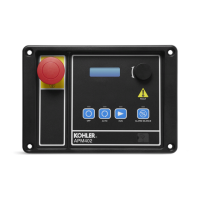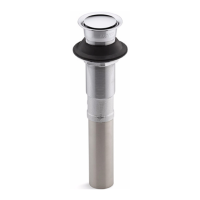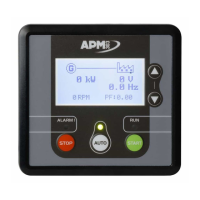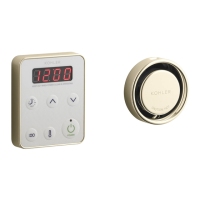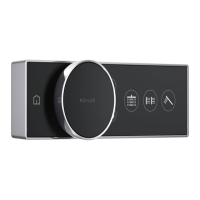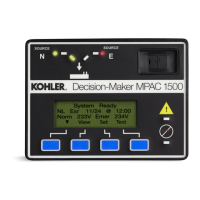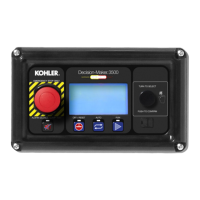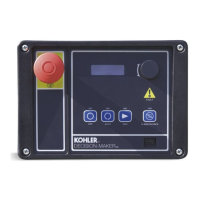4 — PROGRAMMABLE PARAMETERS
pg. 113
Return to TOC Curtis AC F2-A, F4-A, F6-A Motor Controllers – FOS 4.5 – April 2022
CONTROLLER SETUP — INPUTS MENU, cont’d
PARAMETER ALLOWABLE RANGE DEFAULT DESCRIPTION
Low
analog_input_9_low
0x3301 0x00
0.0 – 30.0V
0 – 3000
0.0V The minimum input voltage before a fault is declared.
This voltage represents the 0% point for the normalized inputs.
High
analog_input_9_high
0x3302 0x00
0.0 – 30.0V
0 – 3000
30.0V The maximum input voltage before a fault is declared.
This voltage is the 100% point for the normalized inputs.
Fault Tolerance
Analog_Input_9_Fault_Tolerance
0x3378 0x00
0.0 – 11.0V
0 – 1100
0.0V Species the voltage threshold above the congured high limit
or below the low limit, exceeding this results in an analog out of
range fault.
For example, if High = 9.6V, Low = 1V and Tolerance = 0.2V, an
input voltage between 1V to 9.6V is mapped to 0–100%.
Voltages above 9.8V (9.6 + 0.2) or below 0.8V (1V – 0.2V) trigger
the fault.
PWM Input 10
PWM Input 10 Type
PWM_Input_10_Type
0x5088 0x00
Enumerated*
0 – 2
*Enumerated Options:
0 – Disabled
1 – Duty Cycle
2 – Frequency
0 Input 10 is a high frequency input for either duty-cycle or frequency
signals. When not using the PWM input options, the input operates
as a switch input. See the signal-chain gure, next page.
0 – The PWM Input is not used, and disables fault checking
on this PWM input. This option, for example, is when this
input is used as a switch input.
1 – The PWM_Input_10_Percent is normalized to the duty
cycle low/high range. Fault check is active.
2 – The PWM_Input_10_Percent is normalized to the
frequency low/high range. Fault check is active.
PWM Input 10 Type = (1) duty cycle or (2) frequency
These PWM Input 10 monitor and parameter items are only visible when options 1 or 2 are selected
These items are visible within the Programmer app, Controller Setup » Inputs » PWM Input 10 menu
PWM Input 10 menu
Duty Cycle
PWM_Input_10_Cycle
0x3B69 0x00
0.0 – 100.0 %
0 – 1000
0.0 %
Read Only
PWM Input 10 duty cycle measurement.
Frequency
PWM_Input_10_Frequency
0x3B67 0x00
0 – 10000
0 – 10000
0 Hz
Read Only
PWM Input frequency measurement.
Percent
PWM_Input_10_Percent
0x3192 0x00
0.0 – 100.0 %
0 – 1000
0.0 %
Read Only
PWM input 10 as a percentage of the congured type (duty cycle,
or frequency). 0% maps to min, 100% maps to max.
Duty Cycle Low
PWM_Input_10_Low_Duty_
Cycle
0x5080 0x00
0 – 100 %
0 – 1000
0 % PWM Input low duty cycle threshold.
Duty Cycle High
PWM_Input_10_High_Duty_
Cycle
0x5081 0x00
0 – 100 %
0 – 1000
100 % PWM Input high duty cycle threshold.
Note: Do not set the high value lower than the corresponding
low value.
Duty Cycle Fault Tolerance
PWM_Input_10_Duty_Cycle_
Fault_Tolerance
0x33AF 0x00
0 – 100 %
0 – 1000
0 % Species the PWM input duty cycle threshold above the
congured high limit or below the low limit. Exceeding this results
in a PWM input out of range fault.
For example, if High = 96%, Low = 1% and Tolerance = 0.2%, a
PWM input duty cycle between 1% to 96% is mapped to 0-100%.
PWM input above 96.2% (96 + 0.2) or below 0.8% (1% – 0.2%)
triggers the fault.
Quick Links:
Voltage rottle p.166
3-Wire rottle p.165
2-Wire rottle p.165
Fig. 13 p.17
